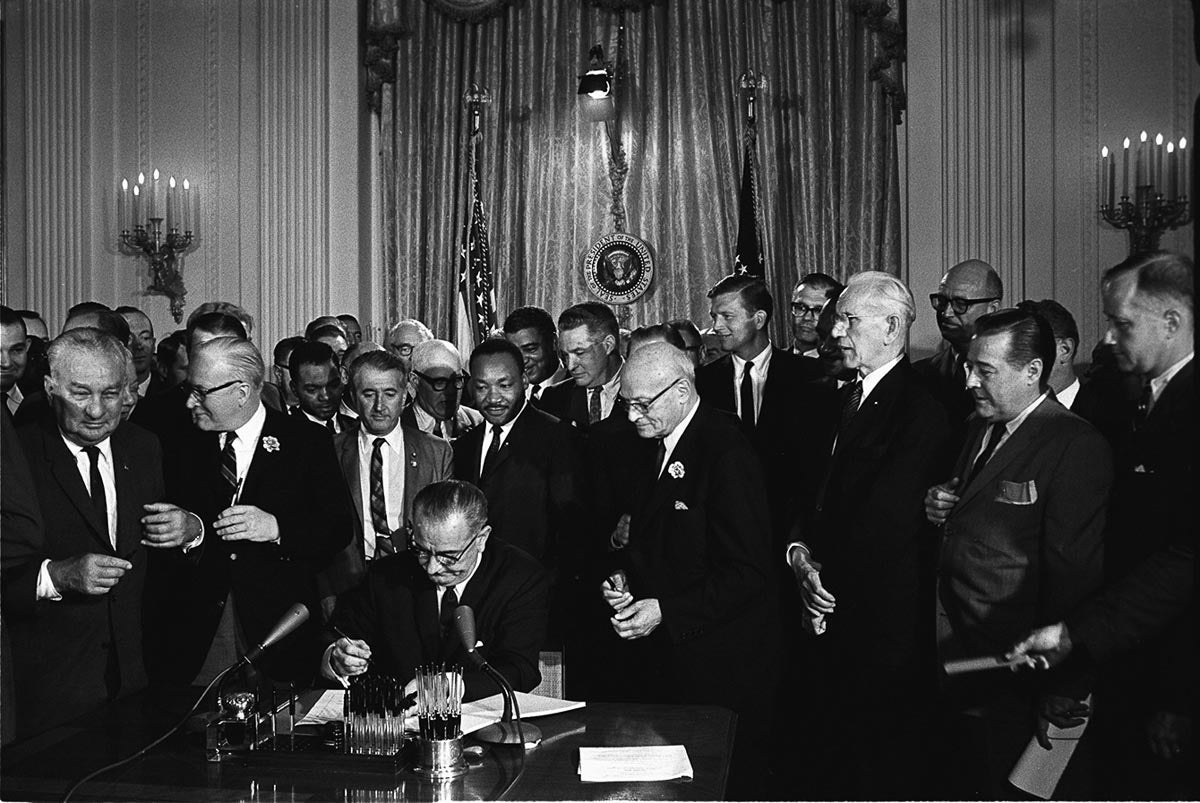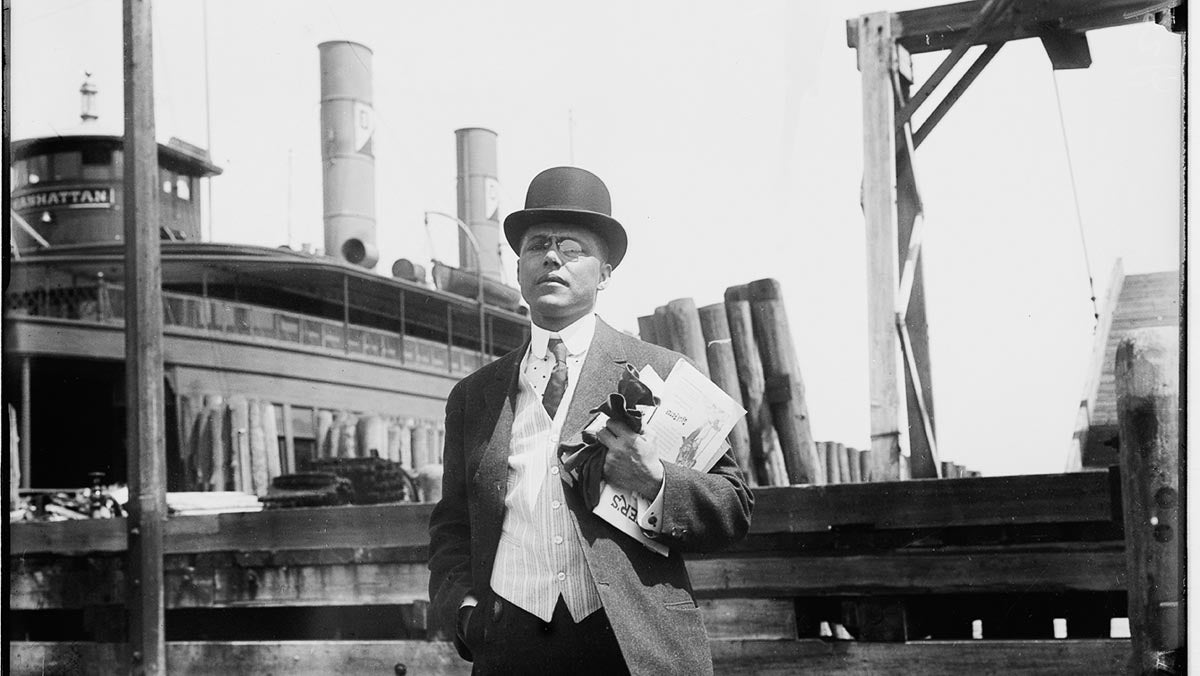As we reimagine the future of cities after COVID-19, how much emphasis will we place on segregation? Institutionalized racism has never ceased to become a part of the infrastructure in many new developments. In many cities, towns and hamlets, Blacks live on the east side, across the tracks, in “shack town,” what some call “The Bottoms.”
Because poverty has been following African Americans since emancipation, the perception of poverty and crime often precedes the recognition of achievements and advancements. The prevalence of white supremacy is so great that Blacks have a hard time escaping its grasp. How does one avoid experiencing injustice when it is embedded inside every fiber of the American flag?
Byron Allen filed a $20 billion lawsuit against Comcast in 2015, claiming race was a factor in the cable giant’s refusal to air channels from his Entertainment Studios Network, and citing Comcast’s decision to carry white-owned channels with similar-size audiences. Allen’s case was based on the 1866 Civil Rights Act. Who would have thought a Black man could become a billionaire anyway? Especially one who started out as a comedian, the only son of a single mother; but remember, whites love to laugh at Blacks and Browns because they are different and that makes them funny.

Two Civil Rights Acts and two Voting Rights Acts
In the wake of the American Civil War, the 1866 Civil Rights Act mainly intended to protect the civil rights of persons of African descent who were born in or brought to the United States, including the right to make contracts, to own property, to sue in court and to enjoy the full protection of federal law.
Congress enacted this little-known law 154 years ago. Begging the question: If there was a Civil Rights Act passed in 1866, why did we need another one in 1964, almost 100 years later? What happened? Ratified in 1870, the 15th Amendment to the Constitution gave Blacks the right to vote. Why was another Voting Rights Act needed in 1965? Again, something went wrong — 100 mo’ years worth of wrong. Black people were still not allowed to enjoy many of their civil rights.
This travesty explains the generational poverty, generational trauma and police brutality seen in the Black community today. While time progressed, and while Blacks progressed, many whites’ attitudes toward Blacks remained what they were several centuries ago. It was what it is: prejudice based on race, dogma and lies. Many evangelicals preach that God and nature meant for the white man to be on top and the Black man to be at the bottom, ’cause it says so in the Bible. The Bible and Christianity have been used to protect slavery and approve oppression.
In the middle of the current 2020 ‘culture war,’ a pandemic during which Blacks and Latinos are disproportionately losing their lives, plans are being made to design what cities will look like after COVID-19. Some are proclaiming ‘good riddance’ for the people who are dying. Others are mourning the loss of their old people. Some government legislators see the loss of seniors as saving money for the Social Security Administration, like immigrants who work and pay taxes but are still immigrants — non-citizens, who harvest the lettuce and tomatoes found in our salads.
As things change, racism stays the same
As we move into the future — about which we know nothing — what will change? And what will remain the same? African Americans are hopeful that one day they will be accepted by white folks. Why are some white folks clinging to those same old ideas that many Black people are inferior — criminals who would like to pay them back for slavery? When the vast majority of African Americans are still trying to pull themselves up by their bootstraps — if they have any. Some whites go around armed to the teeth just in case a Black might break in and attempt to kill them. It is this national paranoia that clings to the Second Amendment and the NRA — which, by the way, has lost status.
In the design of new cities, will there be any need for peaceful protest? The problem of racial terror by urban police too often is a campaign to keep white people safe because they are afraid of Black people. Something Nat Turner did back in 1831 struck fear in white people, and they ain’t forgot that. Somewhere in the back of their minds is the fear that “Blacks are out to git us for what we done to them.”
So, they have armed themselves with the Second Amendment and a few guns to protect themselves from non-white people. Defund the police? Are you kidding? Remember Breonna Taylor, who was sleeping in her bed? And George Floyd — a ‘big, dark Black’ who was attempting to use fake money? We are living in the future and planning for the future; however, racial profiling has not changed. Might it ever change, so little Black children will not be afraid to grow up or to go outside?

Profits at the expense of Black and Latino workers
America has grappled about what to do with Black people for four centuries, while profiting off their bodies and minds, all in the name of capitalism. Blacks and Latinos are still essential workers. While communities are being gentrified and re-designed, will certain spaces be marked for where they will live, work and attend school? What about health care and voting polls?
In the post-pandemic world, there will be more bars and restaurants and fewer office spaces with folks working from home. Who will own these new businesses? Will Blacks be able to secure bank loans for investing in these new spaces? What about the malls and other large public areas that will be repurposed as housing? How much of this new housing will be unaffordable to most, like the new townhouses constructed in Third Ward?
New development in Fourth Ward crowded out Black residents, a community so under siege that — except for the Freedmen’s Town Conservancy — it has almost ceased to exist. Remember in the late 1960s and early ‘70s, when the community — riddled with drugs and shotgun homes — began to give rise to mid-rise apartment buildings and townhouses that were built for folks with money who were fleeing crowded freeway commutes to and from the suburbs? Some of the homes in Fourth Ward date back to 1915 when Emmett J. Scott heralded 50 years of uplift in his Red Book of Houston.
Segregated hospitals and racialized juries helped produce Black doctors and lawyers. Freedmen’s Town was an incubator for Black businesses and insurance companies, banks, schools and libraries, like the Carnegie Library and the Gregory School. Fourth Ward was similar to Black Wall Street in Tulsa. Many early Black communities were a mecca of rising literacy, entrepreneurship, hope and magnificent churches. Two Freedmen’s Town churches were mysteriously destroyed by fire to make room for new developments. They were remnants of the glory days, like grand residences, some with bay windows and hand-painted wallpaper. Now, they’re renovation projects of the Yates Museum.
Gentrification erased Freedmen’s Town and many other traditional Black communities. Others were destroyed by freeways. Increased ‘taxation without representation’ has forced homeowners to vacate their houses. Greedy developers swoop up these properties and build upscale high rises with first-floor retail shops, driving Blacks into the rental market and low-income housing outside the central city, where public transportation and other amenities do not exist. Even schools in these suburban districts are unfriendly: “Here come the Blacks!”
Denied a place and a history
What caused segregation anyway? Is it a misunderstanding of culture? Or a failure to accept some cultures? The culture in power writes the prescription. Yet education writes the path to cultural inclusion. Education is the only medicine that can heal racism and bring about reconciliation. The future of the world’s population and demographics is decidedly plural.
As an educator, I speak on behalf of Black children and young people, white children and young people, young adults, members of DACA, members of all races who have been moved to protest oppression and discrimination the world over. The framers of tomorrow’s communities must reconsider the ramifications of miseducation and misrepresentation of who Black people are — of who any non-Europeans are. Blacks are the beneficiaries of their ancestors, who slaved 300 years to build America and 100 years trying to become equal.
In the South and North and in both Americas, Blacks were enslaved. Their ancestors harvested the cash crops that were the cornerstone of the capitalism that enriched the Industrial Revolution, the rock that made America the richest country in the world. Blacks fought in every American war. But America denies Blacks the right to their historical memory, denies them the education that teaches them who they are. That education is denied to everyone in America.
What happened to make America the great country it once was is being stripped away by the lies of a greedy Republic. The future I imagine after COVID-19 is not likely to be much different unless there is enough education to make it different. Many threads must be woven together to make the cloth of tomorrow a just society.
Naomi Mitchell Carrier is a playwright and veteran classroom teacher of American and Texas history, music, literature and theater. She is CEO of the Texas Center for African American Living History and a former Scholar-in-Residence at the Kinder Institute’s Center for Engaged Research and Collaborative Learning.

